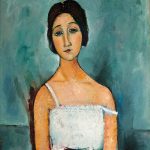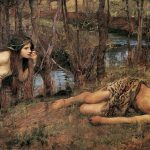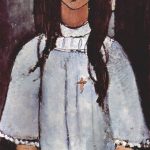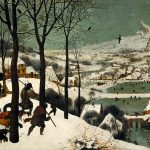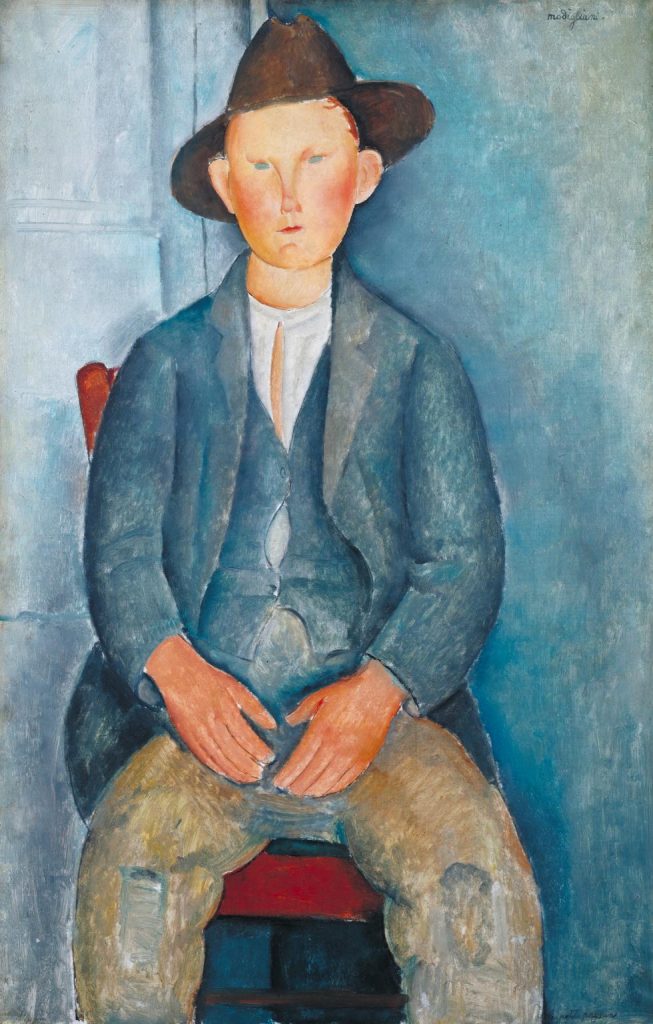
THE LITTLE PEASANT
Amadeo Modigliani (1884–1920)
1918
Italian
Original Title: “Le Petit Paysan”
Oil paint on canvas
Dimensions: Support: 1000 x 645 mm, frame: 1155 x 810 x 65 mm
Tate
This is one of a small group of paintings of youths by Modigliani. The artist inscribed the work’s title on the bottom right of the canvas, identifying the sitter as a ‘peasant boy’. However, the same model appears in a painting in the collection of the Louvre, Paris, titled ‘The Young Apprentice’.
Modigliani had long been deeply influenced by the painter Paul Cézanne (1839-1906), and it seems likely that this painting was a homage to the latter’s series of country workers posed centrally in the canvas and painted in predominantly blue tones.
In 1906, Modigliani moved to Paris, then the focal point of the avant-garde. In fact, his arrival at the centre of artistic experimentation coincided with the arrival of two other foreigners who were also to leave their marks upon the art world: Gino Severini and Juan Gris.
He later befriended Jacob Epstein, they aimed to set up a studio together with a shared vision to create a Temple of Beauty to be enjoyed by all, for which Modigliani created drawings and paintings of the intended stone caryatids for ‘The Pillars of Tenderness’ which would support the imagined temple.[Le Bateau-Lavoir in 191
Tough Times for Modigliani
Modigliani squatted in the Bateau-Lavoir, a commune for penniless artists in Montmartre, renting himself a studio in Rue Caulaincourt. Even though this artists’ quarter of Montmartre was characterized by generalized poverty, Modigliani himself presented—initially, at least—as one would expect the son of a family trying to maintain the appearances of its lost financial standing to present: his wardrobe was dapper without ostentation, and the studio he rented was appointed in a style appropriate to someone with a finely attuned taste in plush drapery and Renaissance reproductions. He soon made efforts to assume the guise of the bohemian artist, but, even in his brown corduroys, scarlet scarf and large black hat, he continued to appear as if he were slumming it, having fallen upon harder times.
When he first arrived in Paris, he wrote home regularly to his mother, he sketched his nudes at the Académie Colarossi, and he drank wine in moderation. He was at that time considered by those who knew him as a bit reserved, verging on the asocial. He is noted to have commented, upon meeting Picasso who, at the time, was wearing his trademark workmen’s clothes, that even though the man was a genius, that did not excuse his uncouth appearance.
Sources: Tate.org. and Wikipedia.


